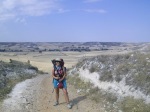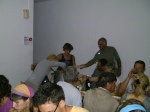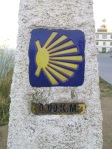On a recent trip to the Douro I discovered that crushing grapes by foot is still in full swing, however it’s not Port that’s being made but still wines and I thought they were delicious.
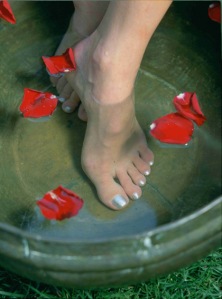
If you need some extra special pampering then wrap your toes in rose petals and have a glass of Douro wine.
My friend Stephanie and I recently had a conversation about the ultimate pedicure. We debated various potions and unguents then Stephanie suggested having each toe individually wrapped in a rose petal. I think that sounds perfect and the only way that this could be improved upon would be to drink an excellent glass of wine at the same time.
One group of people whom I feel are deserving of such pampering (although I am first in the queue) are the grape crushers in the Douro Valley, Portugal. I recently visited the Douro and found out more about crushing grapes by foot than I ever expected to know short of jumping in the vat and paddling about myself.
The Douro is the only place where fruit is still crushed by the human foot (Unless there’s somewhere I haven’t heard of?). Grapes are put into huge concrete baths called lagars and then the crushers get in and set to work. It is easy to assume that immediately a bacchanalian free-for-all ensues.
‘Not so’, says João Nicolau de Almeida, lead winemaker for Ramos Pinto. ‘People have to follow the controller. For the first two hours it is like a military march, very slow, very strict, they have to make sure all the grapes are crushed. Then we all have a glass of wine, the music starts and people can dance and enjoy themselves. The guy playing the accordion has to understand how people need to move to make sure all the grapes are crushed and macerated. Sometimes people form a train, other times they have to go backwards or right into the corners. The different dances and movements ensure that there is the right amount of pressure and the right amount of movement. But all of this is empirical knowledge; it is not something that has been scientifically researched.
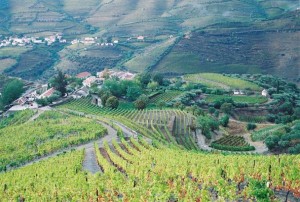
Quinta de Bomfin - it was a rare treat to stay in such a beautiful Quinta.
In this age where most wineries look like computerised factories there is something folksy and quaint about foot crushing and dancing to accordions. However what surprised me most was not that this tradition continues but that it has been adapted for a relatively recent development: these dancing feet are not only making ports for which the Douro is renowned, but also still wines (i.e. around 13-14° alcohol). Most Quinta (that’s winery in Portuguese) have only started making non-fortified wines in the last decade so it is surprising that they have chosen to continue with this labour intensive method when the rest of the wine-making world advocates hands-off (never mind feet) techniques.
‘Foot crushing is a more gentle method and it is part of our Bacchus culture. It is unique to the Douro. We like it here,’ says João Nicolau de Almeida with a smile under him moustache.
Over the river is Quinta do Crasto a winery that dates back to 1615. They have also embraced still wine making and have five different bottlings.
‘Table wine is becoming more important each year,’ explains owner Miguel Roquette. He is kindly taking me for a bit of a wander around his vineyard, one day I’d like to come back here and hike the Douro properly, but for the moment I’m content with gazing at the stunning views of the terraced vineyards.
Some of these plots of vines are pre-phyloxera. Most are such a salmagundi of varieties that Roquette jokes they are like a ‘fruit salad’. I also heard wines made from this haphazard mix of grape varieties referred to as a ‘field blend’.
My two favourites wines were Vinha Maria Teresa 2007 and Vinha da Ponte 2007. They are both field blends, hand picked, foot crushed and hand plunged. Vinha Maria Teresa is dark and tarry on the nose with very juicy, cherry and leather notes on the palate. The tannins are nice and soft but still quite obvious; this wine has bags of ageing potential.
The Quinta only made 3,000 bottles of Vinha da Ponte in 2007 so it is a real treat to get to taste it. This is softer than Maria Teresa with lots of raspberry and chocolate flavours. It is a very complex, sophisticated wine.
What I liked about both of these wines is they are not obvious flavours because the ‘field blend’ means that each wine has an individual and unique character. In a world where so many wines can be monosyllabic and ‘do what they say on the tin’ I think this is very refreshing.
Another ‘field blend’ favourite was the toothsome and spicy Quinta de Griche 2007 from Churchill Estates. I’d hoped to visit the Quinta but a dramatic thunder-storm over night meant the road was impassable. So I met up with owner Johnny Graham and winemaker Maria Emilie Campos in a fancy restaurant instead. (Tough!) As they’d also had their harvest party the night before which had included some serious dancing in the lagars they had clearly had a night to remember. If they were worse for wear then it wasn’t showing.
Maria Emilie suggested we ordered the salt cod and also surprisingly suggested red Quinta de Griche 2007 to go with it. They made a terrific partnership both as both were robust, full flavoured and generous.
However I think my most memorable wine from the trip was one made at Quinta de Bonfim called Duas Quintas, Special Reserva ’07.
‘I made this in a special way. It is crushed in the lagar, no filters are used and it is aged in a large barrel called a tonel’, explains João Nicolau de Almeida.
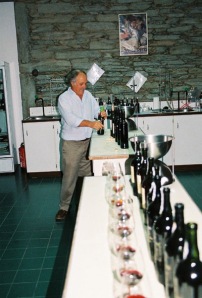
How much wine does João Nicolau de Almeida expect me to drink? Oh alright then...
The wine is very dark and smoky on the nose with liquorice, spice and herb notes. It is very savoury and meaty with big tannins.
‘I was researching for a book I co-wrote called Porto Vintage[1] and I discovered how wine would have been made here 300 years ago. I followed their methods and made Duas Quintas. It is half way between a wine and a port,’ says João.
I’ve read quite a lot on the history of wine and always thought that it is impossible to know how wines would have really tasted, but Duas Quintas is probably as close a replication as it gets. (They drank some good stuff in the seventeenth century!) What it also proves is that the Douro has always evolved and that arguably the ports we know today are not the original wines, meaning that today’s adaptation i.e. table wines are simply the latest incarnation in an on-going development.
I really liked these contemporary Douro wines, I think they’ve got character and are well adapted to modern tastes and drinking habits. However the fact that they are still foot crushed proves that they are very much in-keeping with their region’s viticultural history. I think this demonstrates that winemakers here have a healthy respect for tradition all the while keeping an astute eye on what consumers want. I’m sure that Douro still wines will be around for a while and will probably adapt further. I intend to follow their progress with interest.
For the moment though I’m going to drink a glass of Quinta do Vesuvio 2007 from Symington Family Estates and pamper my feet by wrapping my toes in rose petals. Just a whim of mine.
[1] Porto Vintage Gaspar Martins Pereira and João Nicolau de Almeida, Instituto do Vinho de Porto, 2002.


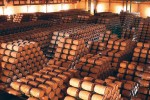 Small wonder then that Bodega LAN takes wood very, very seriously and has built a huge barrel room which they describe as a ‘cathedral to wood’. As I’d seen quite a few cathedrals on my pilgrimage, culminating in the Barroque exuberance that is the Cathedral in Santiago de Compostela, I initially thought Lan’s description was self-aggrandising but when I walked into the huge, vaulted, sweet smelling chamber, stacked high with barrels, and felt the room’s quiet atmosphere, I decided it was appropriate.
Small wonder then that Bodega LAN takes wood very, very seriously and has built a huge barrel room which they describe as a ‘cathedral to wood’. As I’d seen quite a few cathedrals on my pilgrimage, culminating in the Barroque exuberance that is the Cathedral in Santiago de Compostela, I initially thought Lan’s description was self-aggrandising but when I walked into the huge, vaulted, sweet smelling chamber, stacked high with barrels, and felt the room’s quiet atmosphere, I decided it was appropriate.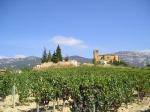
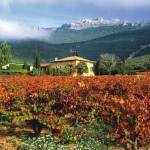
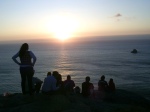 Appropriately one of my last wines in Spain was not from Rioja but from Galicia, where my pilgrimage ended. It is made by Mar de Frades, a sister company to Ramón Bilbao. There is a lovely story that alleges that Albariño is the same as Riesling and was brought to Galicia by monks travelling from the Rhine to Santiago de Compostela. Science has proved this not to be the case, (once again spoiling a good story!) but Mar de Frades, Albariño has a zingy, salty quality that reminds me of the sea at Finisterre. It is fitting that the last stop on my Rioja wine tour reminds me of my last stop on the Way of Saint James.
Appropriately one of my last wines in Spain was not from Rioja but from Galicia, where my pilgrimage ended. It is made by Mar de Frades, a sister company to Ramón Bilbao. There is a lovely story that alleges that Albariño is the same as Riesling and was brought to Galicia by monks travelling from the Rhine to Santiago de Compostela. Science has proved this not to be the case, (once again spoiling a good story!) but Mar de Frades, Albariño has a zingy, salty quality that reminds me of the sea at Finisterre. It is fitting that the last stop on my Rioja wine tour reminds me of my last stop on the Way of Saint James.
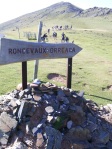 religion or politics in public is usually inappropriate but it’s hard not to mention the R word when you are on a pilgrimage.
religion or politics in public is usually inappropriate but it’s hard not to mention the R word when you are on a pilgrimage.